| Home | Current show | Photography/Calligraphy | Show archives | Japanese pottery | Tea bowls | Sumi-e | Gallery tour | Wabi sabi |

Touching Stone Gallery Santa Fe New Mexico USA
www.touchingstone.com Email: director@touchingstone.com

Touching Stone Gallery Santa Fe New Mexico USA
www.touchingstone.com Email: director@touchingstone.com
|
Within/Without Toubako (ceramic boxes) by eight artists December 2 - 30, 2011 |
|||
|
Yoshitaka Hasu
|
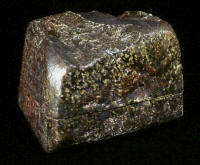 Kiyoharu Ichino |
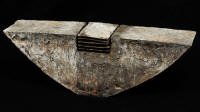 Yukiya Izumita |
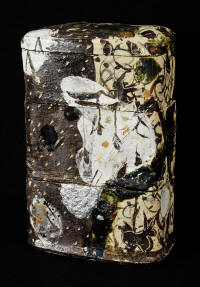 Tadashi Mori |
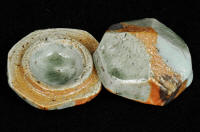 Tadashi Nishihata |
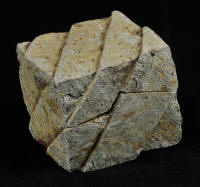 Tim Rowan |
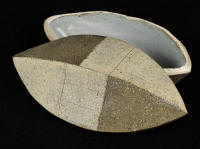 Keiichi Shimizu |
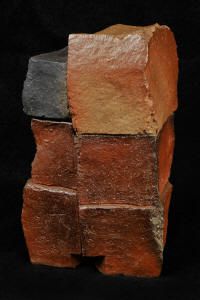 Hiroyuki Wakimoto |
|
Click on images to view selected pieces Inquiry/order: director@touchingstone.com, see Inquiry/Order |
|||
|
Yoshitaka Hasu Yoshitaka Hasu was born in 1949 in Sasebo, Nagasaki Prefecture. After earning a degree in Mechanical Engineering from National College of Technology and working for several years in development of telecommunication, he chose instead to pursue a career in ceramics. In 1975, he started an apprenticeship with ceramist Shiro Banura (1941-2001) in Iga. Banura was strongly inspired by Rozanjin (1883-1959), a famed ceramist and novelist with a discriminating taste, who advocated living with art. This philosophy, which blurs the distinction between utility and art, has been a major influence on Hasu’s work. In 1979, Hasu established his own studio in Iga, where he has been producing some of the most original and exciting work built upon the Iga tradition and this philosophy. |
|||
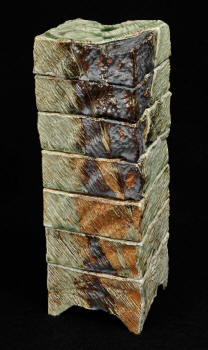 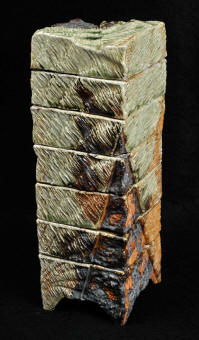 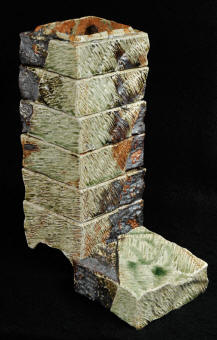 Yoshitaka Hasu Toubako Tower No.1 15.5"h x 5.25" x 5.25" (3 views) Sold |
|||
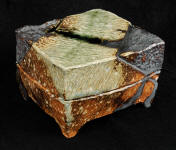 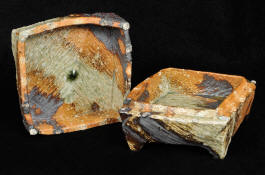 Yoshitaka Hasu Toubako No.2 6" x 6" x 4.5"h (2 views) Sold |
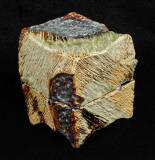 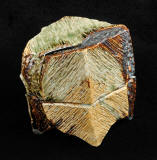 Yoshitaka Hasu Toubako No.5 4.5" x 4.5" x 5.5"h (2 views) Sold |
||
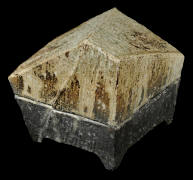 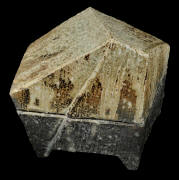 Yoshitaka Hasu Toubako No.3 7" x 7" x 7"h (2 views) Sold |
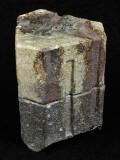 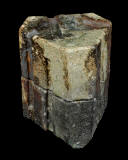 Yoshitaka Hasu Toubako No.15 5" x 4.5" x 6"h (2 views) Sold |
||
|
Kiyoharu Ichino Kiyoharu Ichino was born in 1957 in Tachikui into an extended family steeped in pottery-making tradition. After learning all aspects of Tanba pottery from his father, he moved to Seto at age 20 to study pottery under a master of Akatsu-yaki. Upon returning to Tachikui, he launched his career with the Tanba Group Kiln. In 1983, he established his own kiln and established a contemporary style that drew strength from traditional Tanba pottery without being confined by it. His works were selected repeatedly for the prestigious juried Japan Traditional Crafts Exhibition sponsored by the Japan Crafts Association. He has been a permanent member of The Japan Crafts Association, an honor bestowed to the most experienced and talented artists. |
|||
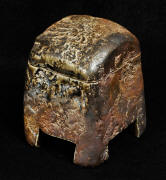 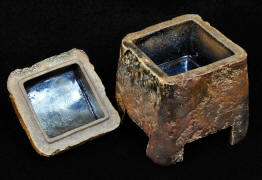 Kiyoharu Ichino Toubako No.1 4.5" x 4" x 5.25"h (2 views) Sold |
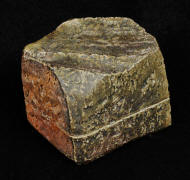 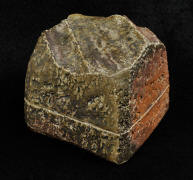 Kiyoharu Ichino Toubako No.2 5" x 4.25" x 4.75"h (2 views) Sold |
||
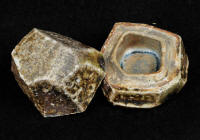 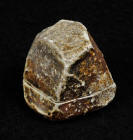 Kiyoharu Ichino Incense Box No.3 3" x 3" x 2.5"h (2 views) Sold |
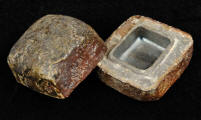 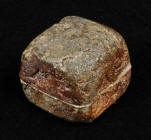 Kiyoharu Ichino Incense Box No.4 2.5" x 2.5" x 2"h (2 views) Sold |
||
|
Yukiya Izumita Izumita (b. 1966) grew up in Iwate Prefecture in northern Japan in an area with high mountains, deep forests and beautiful sea shores. After college, he worked for three years in Tokyo but decided that the populous metropolis was not for him. In 1992, he followed his true calling and returned north to take up an apprenticeship in pottery making under Kokuji-yaki master Gakuho Simodake. In 1995, Izumita established his own kiln in Noda-mura in Iwate Prefecture. In the same year, his innovative work won an Excellence Award in the Nittshin Menbachi Grand Prize Exhibition, the first of a series of prestigious honors which include two Grand Prizes in the 2000 and 2002 Asahi Ceramic Art Exhibitions, and an Excellence Award in the prestigious Japan Ceramic Art Exhibition in 2009. |
|||
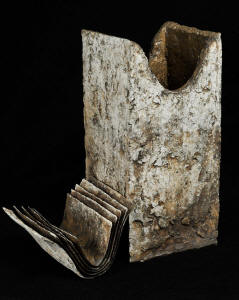 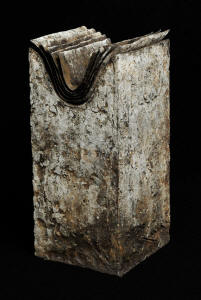 Yukiya Izumita Toubako No.1 13.5"h x 6" x 6" (2 views) Sold |
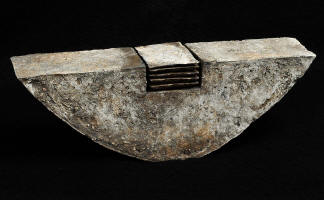 Yukiya Izumita Toubako No.2 17" x 3.5" x 6"h (2 views) Sold |
||
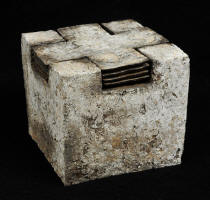 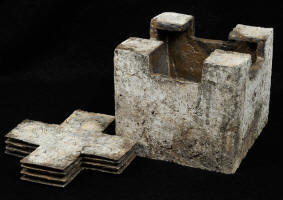 Yukiya Izumita Toubako No.3 8" x 8" x 7"h (2 views) Sold |
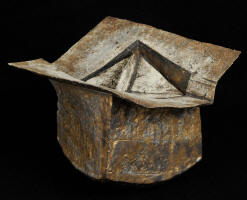 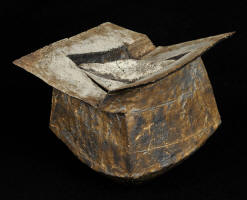 Yukiya Izumita Toubako No.4 9.5" x 8" x 8"h (2 views) Sold |
||
|
Tadashi Mori As a young man, Tadashi Mori (b. 1940) aspired to be a sculptor. In 1964, Mori saw the work of contemporary American ceramists in the International Exhibition of Contemporary Ceramic Art organized by the National Museum of Modern Art in Japan. Inspired by the creative energy of American ceramists, Mori began his life-long quest for his own artistic freedom. In 1970, he resigned from his job as a designer in a ceramic factory and traveled to Rome, Italy. Roaming through the magnificent architecture of another ancient civilization, he realized how much humans need nourishment from culture and art. Upon returning to Japan, he chose to be a full-time artist, committing himself to create highly original works, for which he received many awards. His interest in foreign cultures prompted him to study Thai folk art and travel to Thailand through a Japan-Thailand cultural exchange program. Some of Mori’s most important works, including his ground-breaking pieces entitled "Women Who Like to Whisper", are an amalgam of unique multicultural perspectives. In 1997, Mori was selected among twenty-one Japanese artists profiled in a book entitled Toward a 21st Century Renaissance in Ceramics (Dohosha Ltd. publisher), in recognition to their contributions to contemporary Japanese ceramics. |
|||
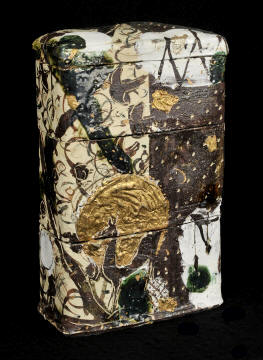 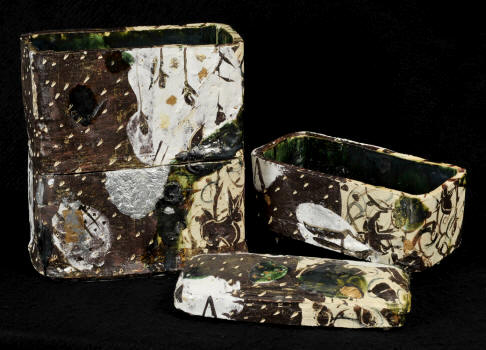 Tadashi Mori Toubako Tower No.1 17.5"h x 10.5" x 6" (2 views) Sold |
|||
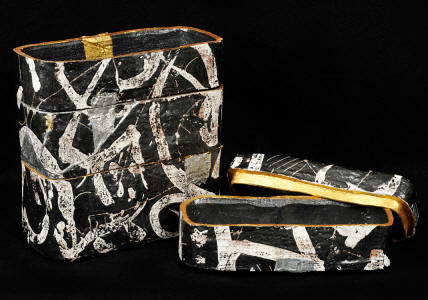 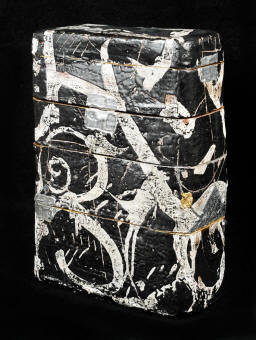 Tadashi Mori Toubako Tower No.2 16"h x 11.5" x 5" (Restored; 2 views) Sold |
|||
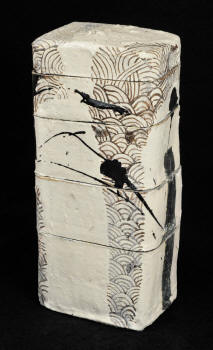 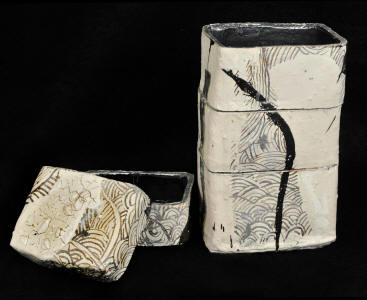 Tadashi Mori Toubako Tower No.3 17"h x 7.5" x 5" (2 views) Sold |
|||
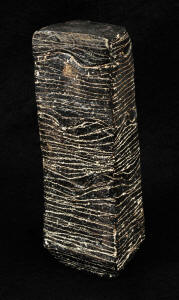 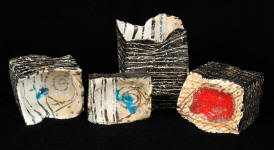 Tadashi Mori Toubako Tower No.4 11.5"h x 3.5" x 3" (2 views) Sold |
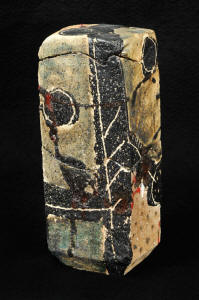 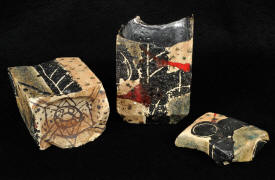 Tadashi Mori Toubako Tower No.5 11.5"h x 4" x 3" (2 views) Sold |
||
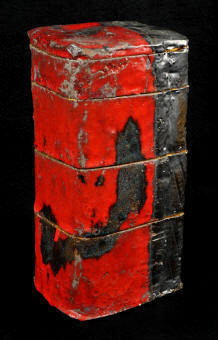 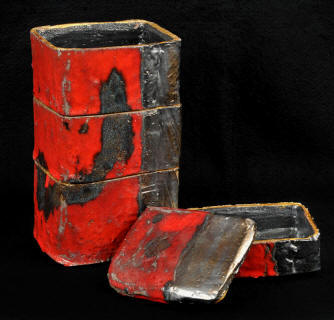 Tadashi Mori Toubako Tower No.6 15.5"h x 7" x 5" (2 views) Sold |
|||
|
Tadashi Nishihata Tadashi Nishihata (b. 1948) comes from a family steeped in Tanba pottery traditions. His great great great grandfather Ichifusa was a master potter known for his figurative sake bottles in the late Edo period (early 19th century). Nishihata’s father, Sueharu (b. 1926), is a respected ceramist who has exhibited extensively. The long historic and familial background provides tremendous depth for Nishihata’s life-long pursuit in Tanba pottery. In 1994, Nishihata won the Grand Prize of the Chanoyu Zokei Ten (Modern Tea Forms) Exhibition sponsored by the Tanabe Museum of Art. In 2005 and 2006, Nishihata won the coveted Grand Prize of the Chanoyu Zokei Ten Exhibition two more times, thus becoming the only artist who has ever been bestowed with this prestigious award three times and twice in consecutive years. |
|||
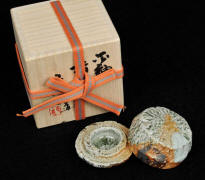 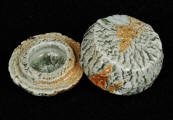 Tadashi Nishihata Incense Box No.1 2.5" x 2" x 2"h (L: shown with box; R: details) Sold |
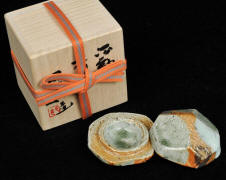 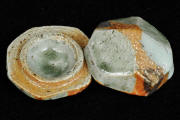 Tadashi Nishihata Incense Box No.2 2.5" x 2" x 2"h (L: shown with box; R: details) Sold |
||
|
Tim Rowan Tim Rowan (b. 1967) received his B.F.A. degree in 1992 with State University of New York, New Paltz. He traveled to Japan and sought an apprenticeship with renowned Bizen ceramist Ryuichi Kakurezaki. Two years later, he returned to the States and obtained his M.F.A. degree with the Pennsylvania State University, University Park. Rowan's choice of Kakurezaki as a mentor is significant, as the latter is known for forging bold new directions built upon traditional wood-firing techniques in the historic pottery center of Bizen. Rather than emulating Japanese pottery styles, Rowan uses the medium to explore conceptual ideas, establishing a highly distinctive and powerful style with strong personality and great depth. |
|||
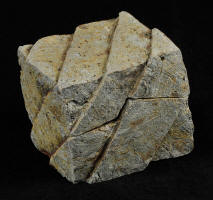 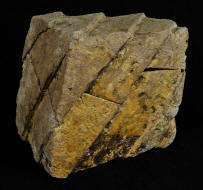 Tim Rowan Toubako No.6 11" x 6.5" x 9.5"h Sold |
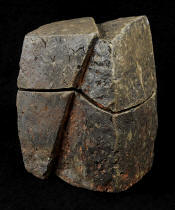 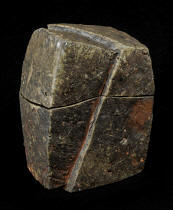 Tim Rowan Toubako No.9 7" x 6" x 10"h Sold |
||
|
Keiichi Shimizu Keiichi Shimizu, a 4th generation potter, was born in 1962 in Tanba Tachikui. He studied pottery at Kyoto City Vocational School. After graduation in 1984, he returned to Tachikui and launched a productive career as one of the most innovative ceramic artists in the area. Unlike most other traditional Tanba potters who base their works largely on wheel-thrown vase forms, Shimizu develops many original forms from slab-built surfaces. He is especially interested in three-dimensional interplay of lines and surfaces, using clay of contrasting colors and textures to accentuate such interactions. His works show a strong minimalist influence, with clean lines and taut surfaces. Curves are used sparingly and purposefully, to introduce tension that seems to hold together the stark geometry. The results are deceptively simple forms that belie great conceptual sophistication and meticulous attention to details, a perfect balance between quiet traditional Japanese aesthetic and dynamic modern interpretation. |
|||
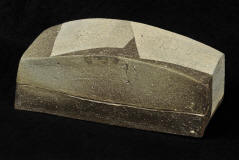 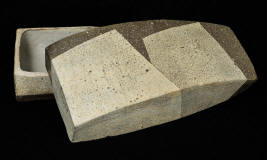 Keiichi Shimizu Toubako No.1 11" x 5" x 4.5"h (2 views) |
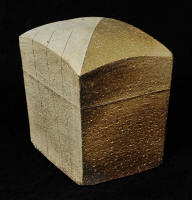 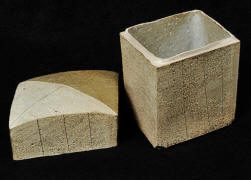 Keiichi Shimizu Toubako No.2 4.5" x 4" x 6"h (2 views) Sold |
||
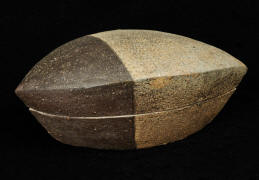 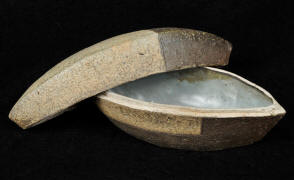 Keiichi Shimizu Toubako No.3 8.5" x 4" x 3.5"h (2 views) Sold |
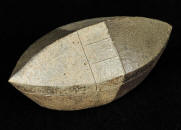 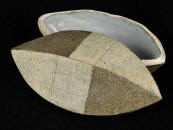 Keiichi Shimizu Toubako No.4 8.5" x 4" x 4"h (2 views) Sold |
||
|
Hiroyuki Wakimoto Born in 1952 in Tsushima, Nagasaki Prefecture in Kyushu, Hiroyuki Wakimoto received art training in Osaka Art College. In his senior year, he left college and went to Bizen to begin an apprenticeship with George Yamashita, an accomplished ceramist who studied with Living National Treasure Jun Isezaki. Nine years later, Wakimoto established his own kiln in Bizen. With a great interest in forms and mastery in wood-firing, Wakimoto has created some of the most interesting wood-fired works in contemporary Japanese ceramics. The current show includes examples of his pioneering composite forms, which are instantly recognized by their bold, powerful lines and impeccably beautiful firing. |
|||
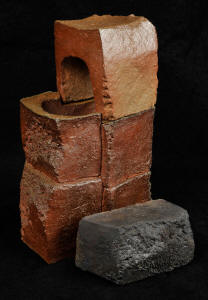 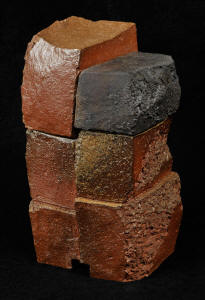 Hiroyuki Wakimoto Toubako No.1 12"h x 7" x 6" (2 views) Sold |
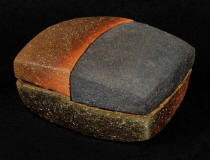 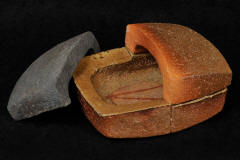 Hiroyuki Wakimoto Toubako No.2 7.5" x 6" x 4"h (2 views) Sold |
||
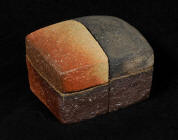 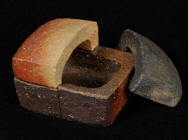 Hiroyuki Wakimoto Toubako No.3 4.5" x 4" x 3"h (2 views) Sold |
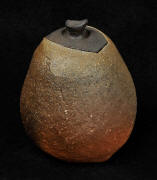 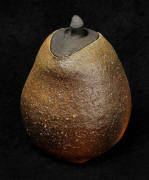 Hiroyuki Wakimoto Toubako No.4 4.5" x 4.5" x 6"h (2 views) Sold |
||
|
|
|||